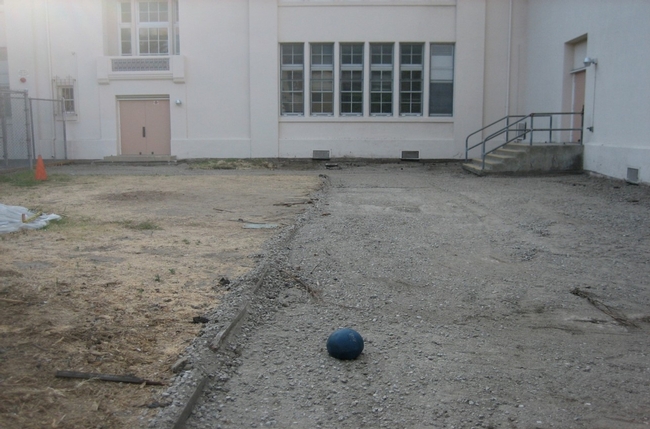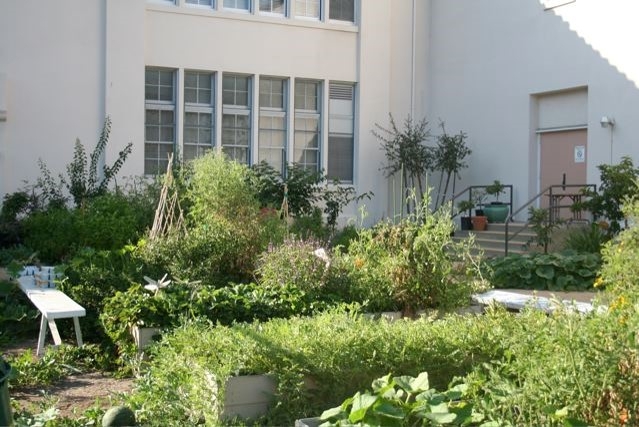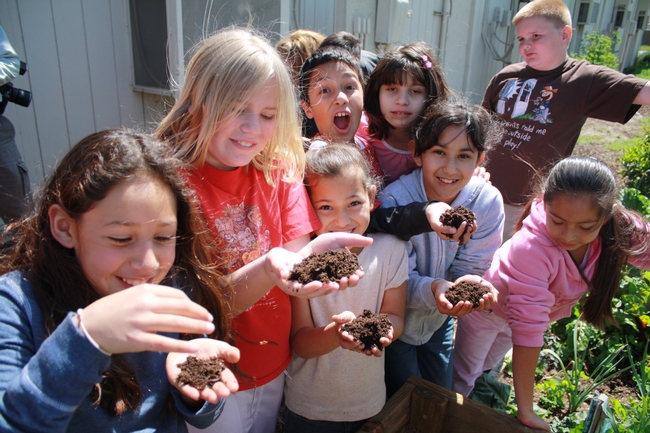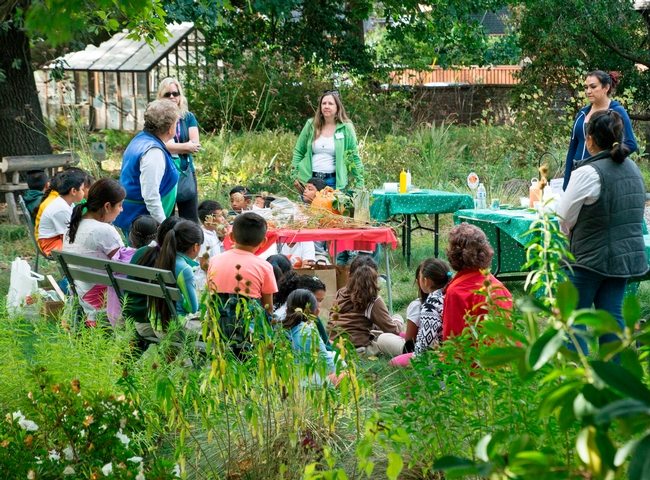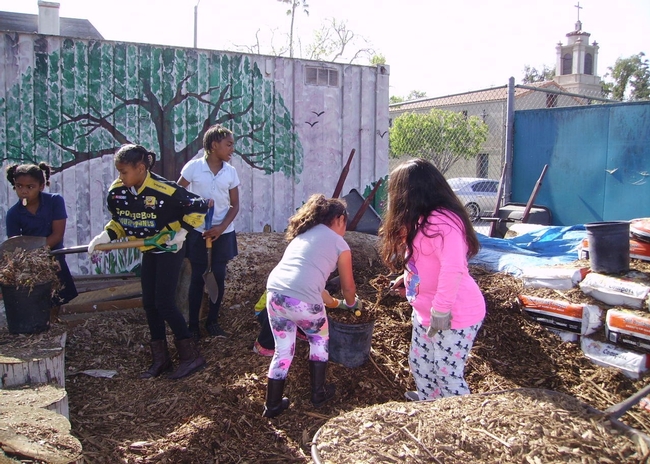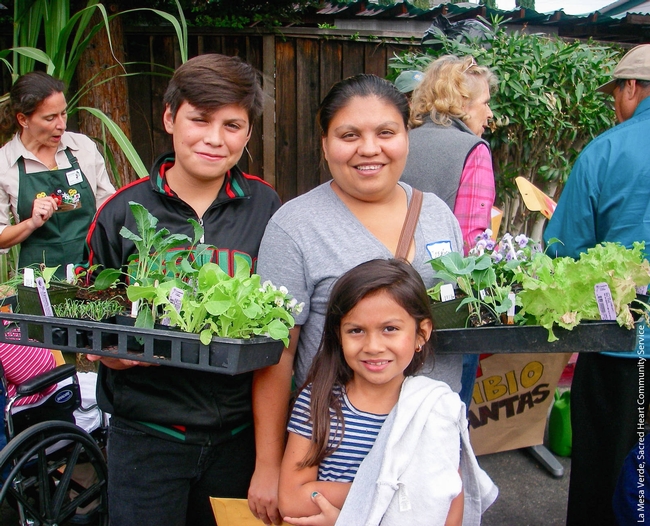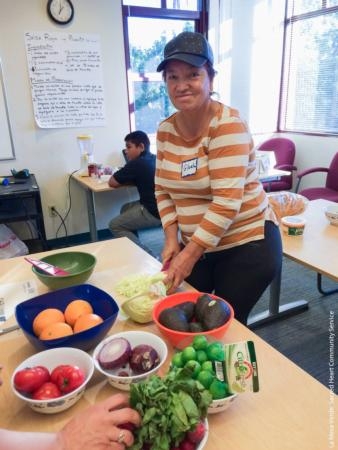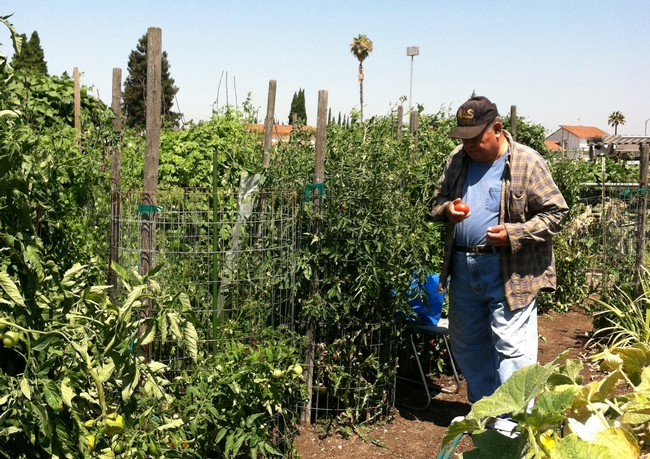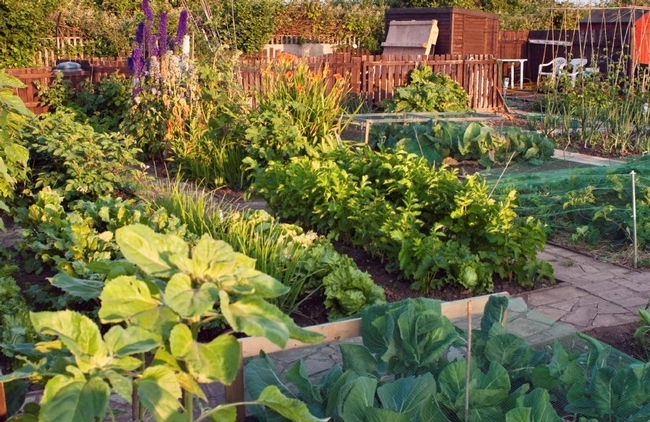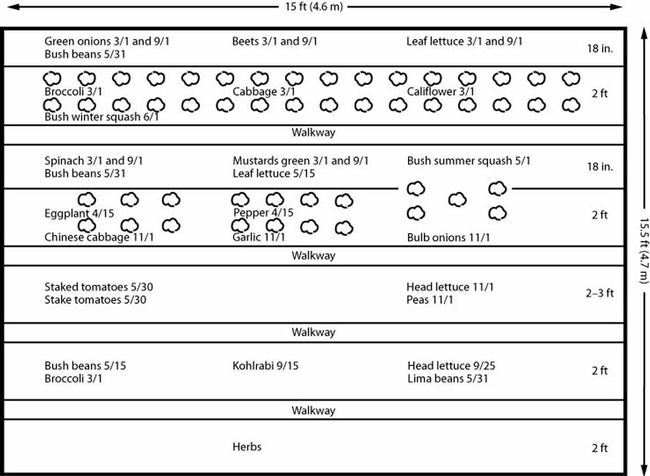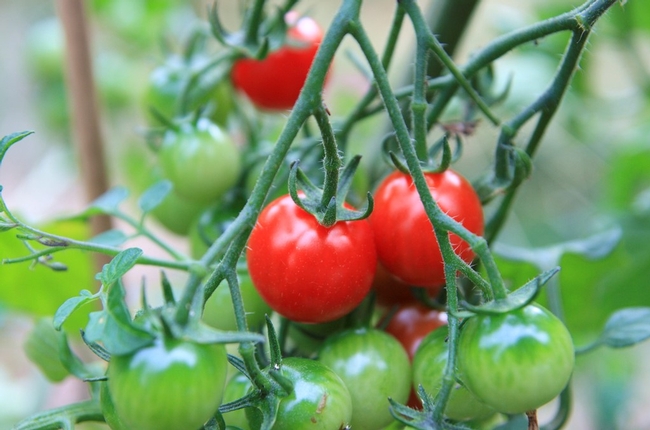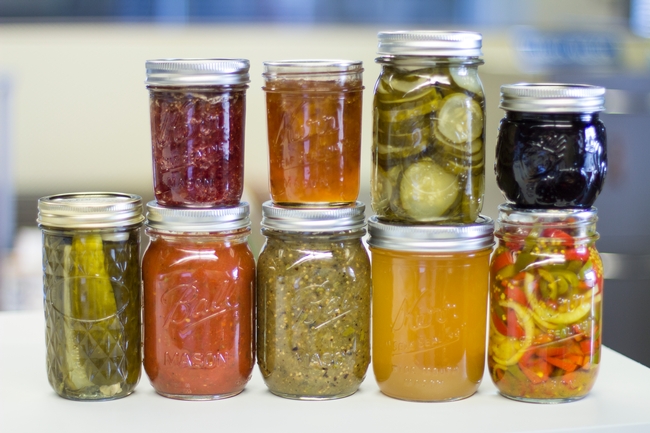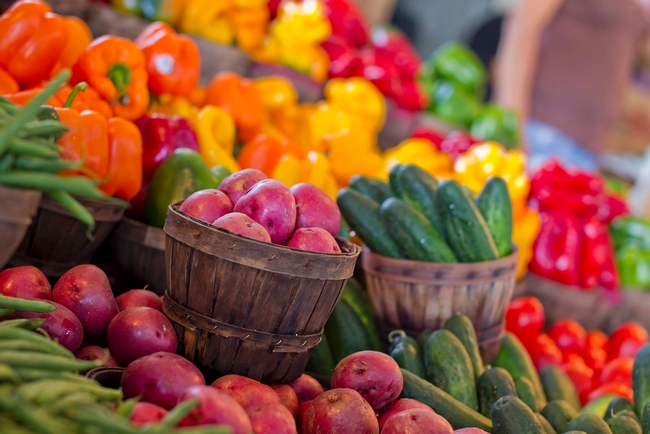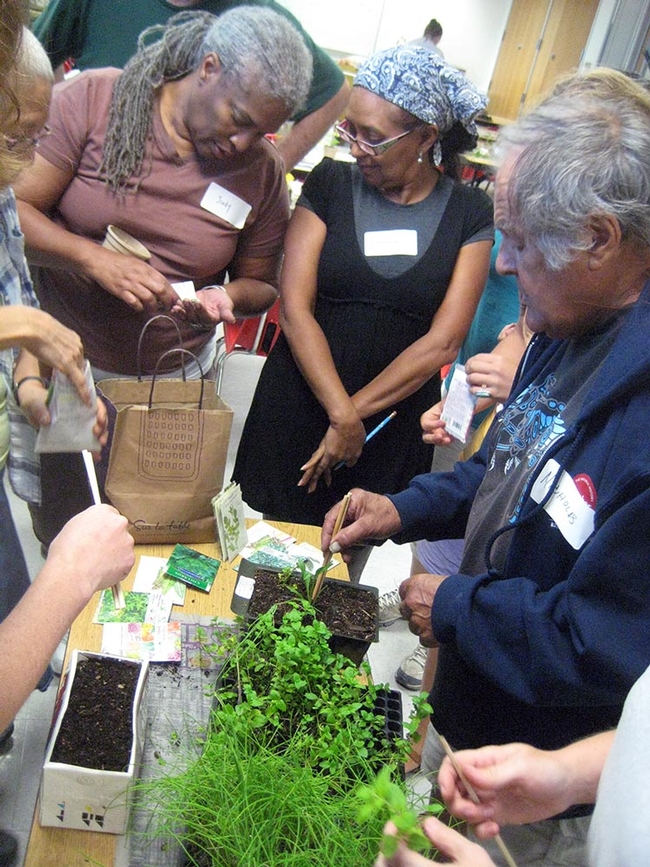Posts Tagged: gardening
Go back-to-school with a garden
It's that time already when the kids start heading back to school and meals go back to a strict schedule. It can be easy to turn to take-out and other convenience foods to make meal times more manageable, especially during the rush of back-to-school. However, there's a long school year ahead and focusing on good habits now can set the tone for the next nine months. The old adage that “food is fuel” rings true - healthy choices help kids maintain a healthy weight, avoid health problems, manage energy levels, and sharpen their minds.
How can we reinforce healthy eating habits during the hustle and bustle of back-to-school?
School gardening offers children opportunities to get outdoors and exercise while teaching them a useful skill. Gardens containing fruits and vegetables can revise attitudes about particular foods; there is even a correlation between growing fruits and vegetables and consumption of these products. Gardens are likely to transform food attitudes and habits and in school gardens this can be especially impactful when combined with nutrition education.
In addition to health and nutrition benefits, gardening also offers hands-on experiences in a variety of core curriculum which includes natural and social sciences, language arts, nutrition and math. This can play a big part in supporting your kids' education outside of the classroom.
Benefits of school gardening:
- Physical health
- Social and emotional health
- Academic achievement
- School and community benefits
- Enhance nutritional preferences, and
- Increased self-esteem
Learn more with the UC Master Gardener Program
The UC Master Gardener Program is a community of volunteers across California, under the UC Division of Agriculture and Natural Resources, that extends research-based information on gardening to the public. If your school does not have a school garden program, contact the UC Master Gardener Program in your county to learn about the possibility of new school garden programming and other garden-education you and your children can participate in.
The UC Master Gardener Program can connect you with local community gardens, and or provide the information you need to get started with your own school or home garden. Many programs have relationships with local schools to support garden-based education.
“Dig it, Grow it, Eat it”
The UC Master Gardener Program in Marin County hosts a portable field trip for school-age youth called “Dig it, Grow it, Eat it.” This award-winning program emphasizes engagement and the many learning opportunities that take place in nature. Youth learn all about growing edible plants from seed to harvest and educators get the support of University-trained UC Master Gardener volunteers to deliver the curriculum.
Whether or not you already have a school garden program your family can engage in, reach out to the UC Master Gardener Program to get the help and information you need to inspire healthy eating and an active lifestyle in your children. Now is a great time to plan and plant your winter garden, just in time to get your kids back to school and excited to be learning … wherever that learning takes place!
The UC Master Gardener volunteers are eager to help with all of your gardening needs. The UC Master Gardener Program can work with teachers and community volunteers to provide gardening information and consultation in the support of school gardens. With local programs based in more than 50 counties across California, there is sure to be a workshop or class near you. Visit our website to find your local UC Master Gardener Program, mg.ucanr.edu.
Community and home gardens improve San Jose residents’ food security
Participants in the pilot study, published in California Agriculture journal, reported doubling their vegetable intake to a level that met the number of daily servings recommended by the U.S. Dietary Guidelines. Meals rich in fresh fruits and vegetables are lower in calories and higher in fiber and part of a healthy diet.
About 13.5 percent of California households face food insecurity – reduced quality, variety or desirability of diet and, in some cases, reduced food intake – according to a 2014 USDA Economic Research Service study.
Although Silicon Valley is one of the wealthiest areas of the state, some parts of Santa Clara County have “food deserts,” low-income neighborhoods without grocery stores stocked with fresh fruits and vegetables at affordable prices. Even in neighborhoods with grocery stores, residents may have less to spend on food after paying rising housing costs.
“Gardening made a substantial contribution to vegetable intake regardless of socioeconomic background or previous gardening experience,” said co-author Lucy Diekmann, a postdoctoral researcher in the Food and Agribusiness Institute at Santa Clara University.
Growing food saves money
UC Cooperative Extension surveyed 85 community gardeners and 50 home gardeners in San Jose. The gardeners surveyed were generally low-income and came from a variety of ethnic and educational backgrounds. The survey was available in English, Spanish and Chinese.
By growing their own food, home gardeners saved on average $92 per month and community gardeners saved $84 per month.
A number of programs in California, including Sacred Heart Community Services' La Mesa Verde, help low-income families establish their own vegetable gardens. As of 2013, Supplemental Nutrition Assistance Program (SNAP) benefits can also be used to purchase seeds and plants so that low-income households can grow their own produce.
One gardener in the La Mesa Verde program told the researchers that without the savings and access to homegrown vegetables, she would have struggled the previous year. Her garden significantly supplemented her diet.
Wider variety of fresh produce
Tomatoes, cherry tomatoes, peppers, green beans and cucumbers were the most common crops grown by community gardeners. La Mesa Verde families were given seeds and plants to grow tomatoes, peppers, beans, basil, zucchini, radishes, cucumbers and eggplants.
Culturally favorite foods were also grown by San Jose's ethnically diverse residents in both community and home gardens. They grew crops including chayote, bitter melon, goji berries, green tomatoes, fava beans, okra, collards and various Asian vegetables, such as bok choy and mustards.
Gardeners in both groups gave excess produce to their friends and family members.
Growing demand for gardens
For the study, the authors collaborated with the San Jose Parks, Recreation and Neighborhood Services Department, which runs the city's Community Garden Program. The city operates 18 community gardens that serve more than 900 gardeners and occupy 35 acres in San Jose, yet there is growing demand for more gardening space.
“One of the challenges to starting a garden, particularly for low-income gardeners, is a lack of adequate space,” said Diekmann. “La Mesa Verde gardeners are advocating for San Jose to adopt Urban Agriculture Incentive Zones so that more San Jose residents can have space to garden.”
The study was conducted by UC Cooperative Extension advisor emeritus Susan Algert, Leslie Gray of Santa Clara University, Marian Renvall of UC San Diego Department of Medicine and Diekmann, whose participation in this study was funded by a USDA NIFA Agriculture and Food Research Initiative postdoctoral fellowship.
To read the full report in California Agriculture, visit http://ow.ly/wfWX300Dbzj.
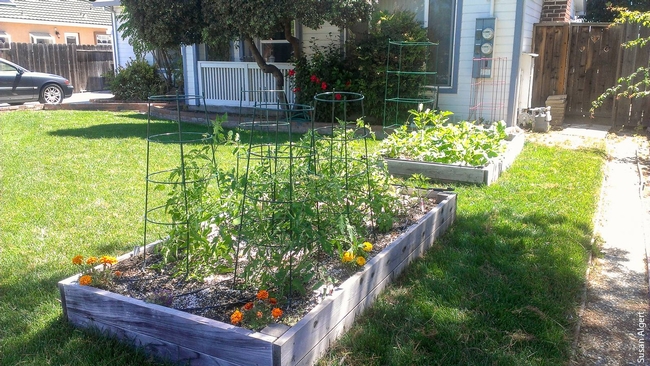
SNAP benefits can be used to purchase seeds and plants to grow produce.
Three winter activities for a bountiful summer harvest
Shorter days and colder weather means most people aren't thinking about spending large amounts of time in their garden. However, February is the perfect month to plant cool season leafy vegetables or root plants, like cabbage, beets and carrots. These nutrient-rich plants are packed with healthy antioxidants and vitamins and make the perfect addition to a hot bowl of soup. If you aren't game to play outdoors, cold winter months are a great time to stay inside and start planning for summer garden fruit and vegetable bounties.
If you're like most people you're probably already dreaming about summer fruits and vegetables, like tomatoes, sweet corn, blackberries and chard. Follow these three simple tips and you'll be rewarded come summertime with enough homegrown fare to fill your fridge and preserve to carry you through the year.
Step one: plan
Instead of dreaming about a summer harvest, start planning now! Don't get caught up in the seductive call of seed packets or the dreaded 'transplant trap.' This happens when you head to your local nursery without a plan for your garden and leave with 20 plants you've never heard of before.
With California in an official drought, consider planting varieties that require less water. Some great examples of drought-tolerant plants include herbs (rosemary, sage and thyme), asparagus, eggplant, melons, squash and goji berries. Think about Mediterranean flavors, many of these varieties require less water and do well in California's hot, dry climate.
Think outside the box – it doesn't have to be just about fruits and vegetables. What does your family love to eat? Do they love spaghetti? Consider focusing on a good crop of tomatoes, peppers, onions and oregano. You can harvest enough to preserve homemade marinara for the remainder of the year. Add some jalapenos to this garden mix and you have all of the ingredients for delicious salsa, another favorite that is easily preserved.
Step two: prioritize
The size of your garden will depend on available space. When planning a smaller garden, typically 10 by 10 feet or less - prioritize with fruits and vegetables that your family will eat AND that have high or continuous yields. The goal is to produce the largest quantity possible with your available resources (space, water). Great options include tomatoes, bush beans, summer squash, chard and cucumbers. In a small space, avoid crops that monopolize precious garden space like potatoes, watermelon, cabbage and artichoke. Rather, consider purchasing these tasty delights from a local farmers market.
Expand your garden's reach by incorporating edibles into your landscaping or containers. Edible landscaping is the use of food plants as design features in a landscape. Edible plants can be used both for aesthetic value as well as consumption. Blueberries, raspberries and strawberries can be expensive to buy at the supermarket, but are easy to grow at home. Visit The California Garden web for information on garden planning and individual plant spacing requirements.
Step three: prepare
Attend a UC Master Food Preserver class and learn how to manage your fruits and vegetables once they arrive from your garden and move into your kitchen. The UC Master Food Preserver (MFP) Program is a public service community outreach program focused on providing up-to-date information on food safety and preservation. Monthly classes are available, and most are free or low-cost to the public.
Preservation techniques include:
- Freezing (berries, onions, broccoli, rhubarb)
- Drying (fresh herbs, kale, root crops, peas)
- Canning (tomatoes, green beans, corn, strawberries)
Master Food Preservers have delicious recipes for salsa, corn relish, pickles, jams, jellies and much more! Winter months are the perfect time to start calendaring Master Food Preserver classes, collecting recipes and cataloging ideas for preserving your summer bounty. Find preserving research, resources or find a local UCCE Master Food Preserver class near you at on the UC Food Safety website.
With the proper planning, prioritizing, and preparation the activity level in your kitchen will be as hot as or even hotter than the temperature outside come summer harvest!
Are you interested in becoming a certified UC Master Gardener or UC Master Food Preserver? Visit our website to learn more!
What's in your compost?
For home gardeners, spring is a busy time of year and there’s never a tomato with more flavor than one grown to full ripeness on the vine. But there are also many safety precautions to follow to prevent contamination of fruits and vegetables with pathogens that cause serious food-borne illnesses.
Michele Jay-Russell, a veterinarian and research microbiologist at the Western Institute for Food Safety and Security (WIFSS) and program manager of the Western Center for Food Safety (WCFS), recently co-authored a study that highlights the need to be aware of the hazards associated with using raw animal manure to fertilize home gardens. (Read full article here.)
The basis for the study began in July of 2010 when a shire mare from a rural Northern California farm was brought to the William R. Pritchard Veterinary Medical Teaching Hospital for treatment of colic. Following protocol, the veterinarians on call screened the horse for Salmonella to avoid infecting other horses during hospitalization. She tested positive and after successful treatment for colic, went home. Her owners then notified the veterinarians that some of their other draft horses were sick as well — all 8 were tested and 6 came back positive for the same Salmonella Oranienburg strain, including the mare that still had the infection.
Jay-Russell heard about the case from her colleague John Madigan, professor of medicine and epidemiology at the school. The farm’s owners invited Jay-Russell and Madigan to the farm to see if they could uncover the source of the Salmonella infection. They sampled water from horse troughs, manure storage piles, wild turkey feces and soil from the family’s edible home garden where raw horse manure had been used as fertilizer. Each of those locations had a percentage of positive samples over the sampling period from August 2010 to March 2011.
“We showed the owners how to continue collecting samples and provided them with a FedEx number to ship them to UC Davis,” Jay-Russell said. “During that whole time, the garden soil kept coming back positive, which showed that this strain of Salmonella could persist for months.”
While the researchers couldn’t be completely certain about the original source of Salmonella on the farm, they suspect that a recent surge in the wild turkey population on the property introduced the bacteria to the horses by pooping in the horse corrals and in the water troughs. They speculated that the wild turkeys brought the Salmonella onto the property, although they couldn’t rule out the possibility that the birds were exposed on the farm or to other potential sources of Salmonella.
“What is clearer is that the raw horse manure applied as fertilizer was the most likely source of garden soil contamination,” Jay-Russell explained. “We suspect that the damp climate in Mendocino County may have contributed to the longevity of this bacterium in the soil long after the owners stopped applying the horse manure to the garden. Fortunately, the owners didn’t get sick, but our investigation showed the potential for widespread dissemination of Salmonella in a farm environment following equine infection.”
To promote safe gardening practices, Jay-Russell has teamed with Trevor Suslow, a Cooperative Extension food safety specialist in the Department of Plant Sciences, to speak to groups of small farmers around the state about best practices. They also use a brochure in English and Spanish, “Food Safety Tips for Your Edible Home Garden,” that includes information about safe uses of animal manure and ways to minimize animal fecal contamination.
“It’s good to let people know about the risks and to correct misinformation about ways to treat the compost pile before using it in the garden,” Jay-Russell said. “The biggest take home message from this experience is to be very careful about using manure from sick horses — and to be cautious about offers of free manure — you don’t know what’s in there. Commercial compost should be bought from a reputable source.”
She urges gardeners to take a class and learn how to compost correctly and safely. Each county in California has UC Cooperative Extension advisors and many have Master Gardener programs offering information on food safety.
Additional resources:
Resources for beginning vegetable gardeners develop from LA initiative
Home vegetable gardening has always been popular in Los Angeles County. At the UC Cooperative Extension office in Los Angeles, we have a long history of teaching people how to garden through our Common Ground Garden Program. We began to get even more inquiries than usual from beginning gardeners starting three or four years ago. As it turned out, this was part of a larger trend. A national survey showed a 19 percent increase in edible gardening in U.S. households in just one year, between 2008 and 2009. We were excited about this new enthusiasm for home food production. However, based on experience at the community level, we were aware that new gardeners often floundered and might not continue gardening without support and a taste of success.
To address this growing audience of beginning vegetable gardeners, we developed a four-session workshop series, led by seasoned Master Gardener volunteers, to help new gardeners gain the fundamental skills needed to become successful. We call this the Grow LA Victory Garden Initiative. Training groups are kept small, 10 to 15 people, and are largely hands-on. New gardeners learn to prepare soil, plant seeds and transplant seedlings, water effectively and control pests. After training, the new gardeners continue to meet with their group leader informally, encouraging one another and sharing gardening tips.
This initiative has been popular and successful. Since we kicked off “Grow LA” in spring, 2010, we have trained 1,130 beginning gardeners at more than 40 sites around the county, including community gardens, parks, churches, libraries, schools and museums.
One outcome of this project has been the development of a manual for participants, the Vegetable Gardening Handbook for Beginners. Our staff, led by Yvonne Savio and Valerie Borel, compiled the basics of vegetable gardening into a 44-page manual. With support from the Metabolic Studio, a direct charitable activity of the Annenberg Foundation, we were able to print the manual for participants, and translate it into Spanish. Thanks to the efforts of UC ANR News and Information Outreach in Spanish, the Spanish-language version has just become available. Both versions are available free on-line, and we hope others will find them helpful as well.
Vegetable Gardening Handbook for Beginners-English
Vegetable Gardening Handbook for Beginners-Spanish


